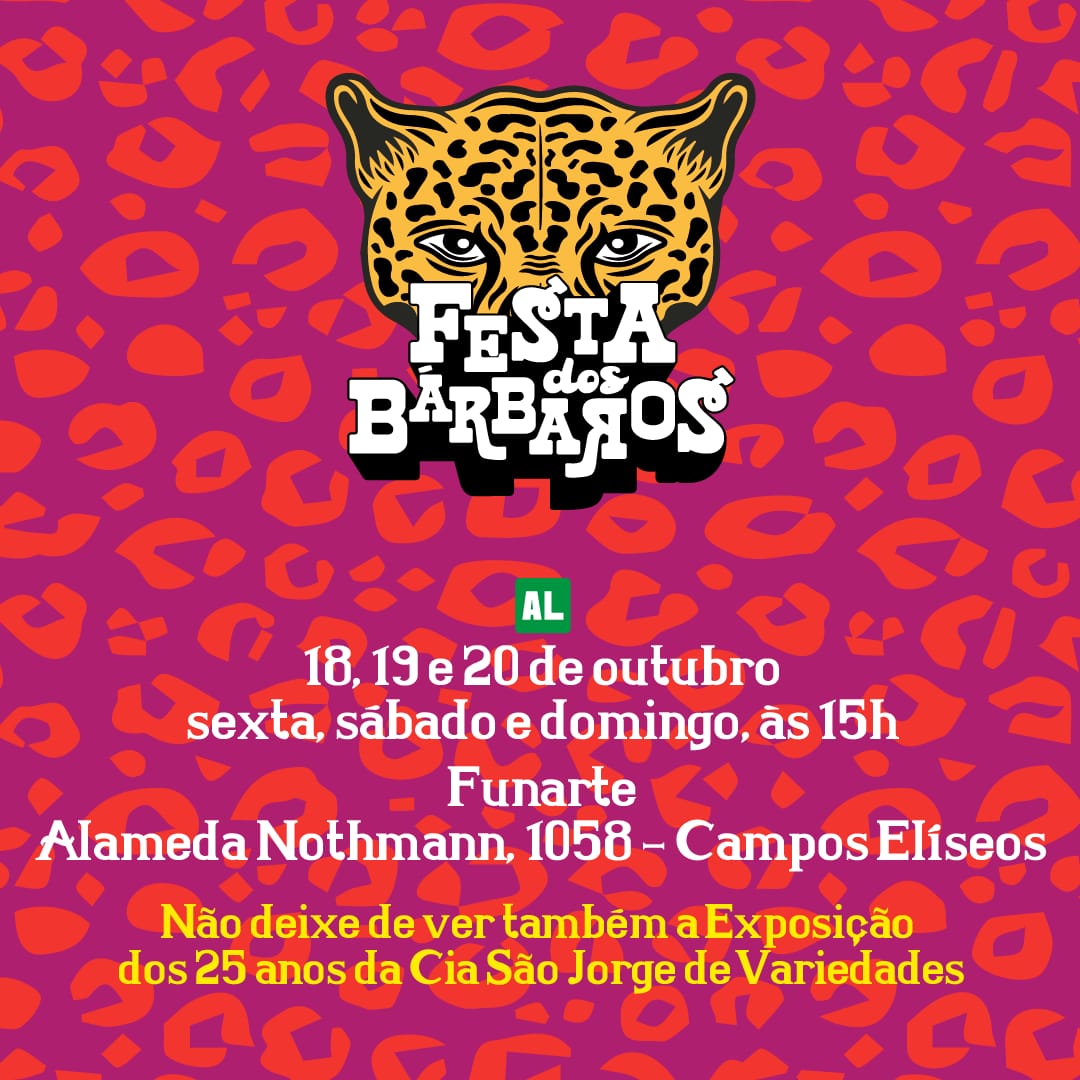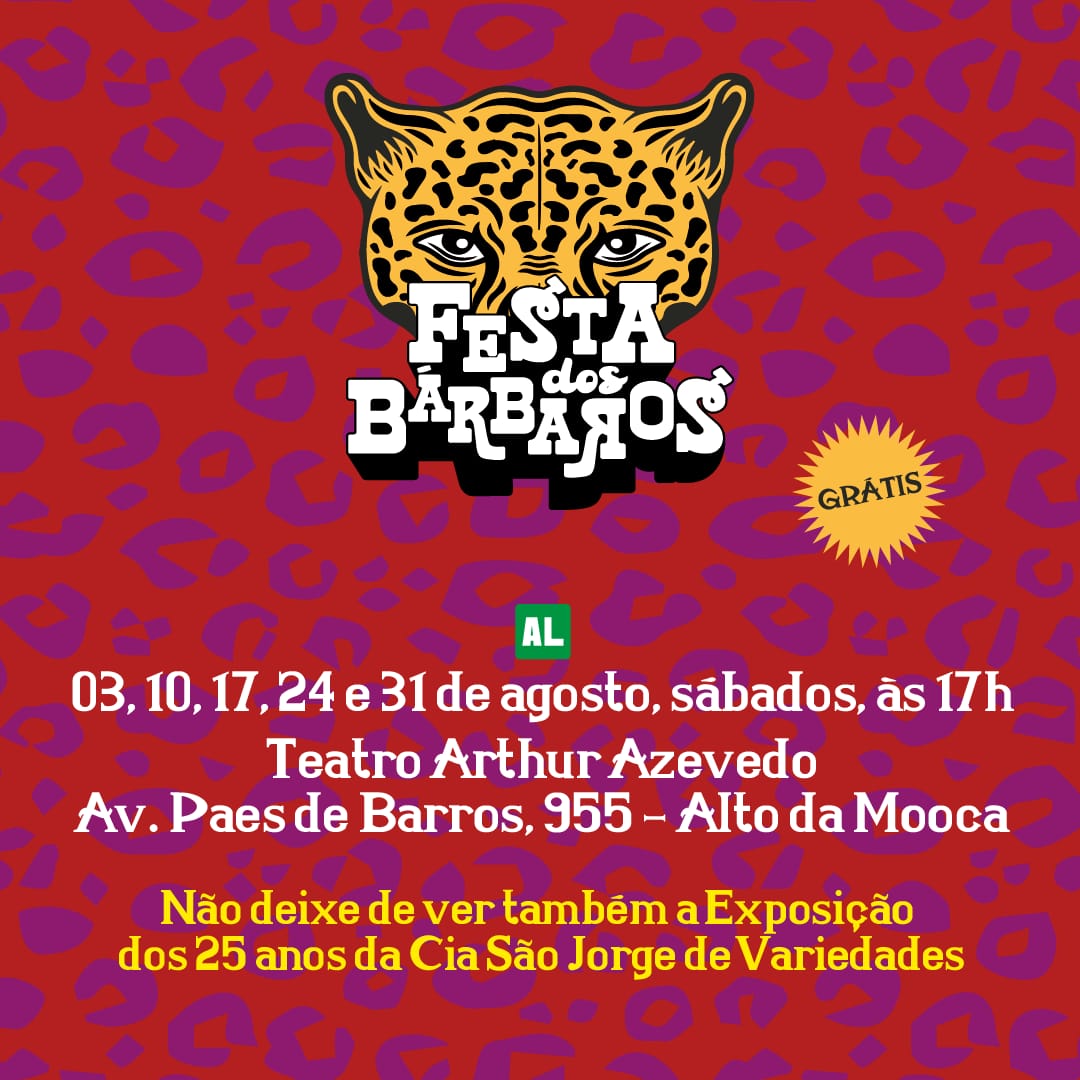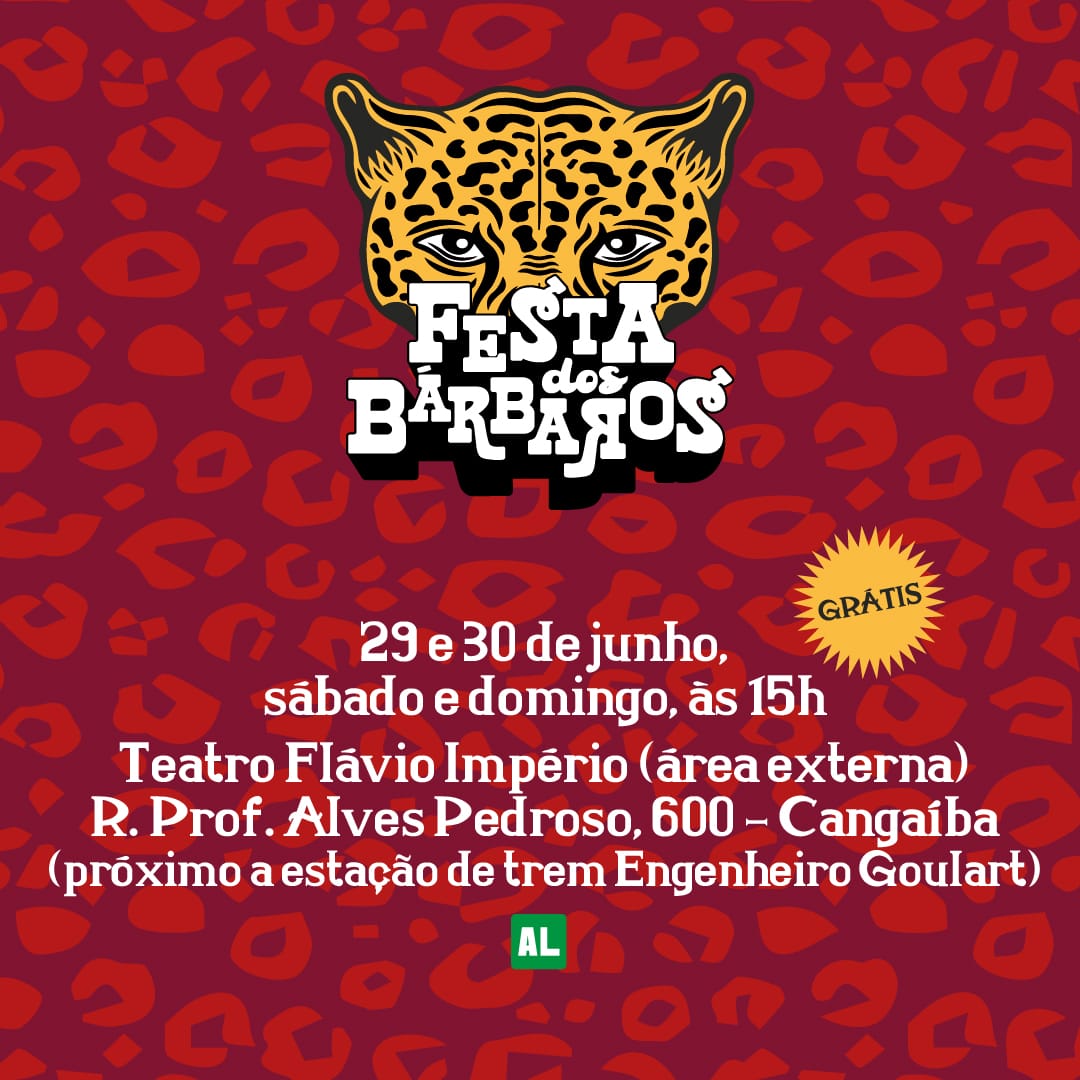WARRIOR SAINT AND UNADJUSTED HERO
(O SANTO GUERREIRO E O HERÓI DESAJUSTADO)
In a more and more individualistic society, Companhia São Jorge de Variedades swims against the stream and arrives in an open plaza to affirm the importance and the force of the collective. The first street spectacle by Companhia São Jorge de Variedades promotes the fusion between a great classic of the universal literature and the Brazilian popular traditions. A carnival spectacle that tells the story of the incredible meeting between Don Quijote de La Mancha and the Warrior Saint George. A reflection about the sense of the hero nowadays in the big metropolis.

WHY DON QUIJOTE AND SAINT GEORGE?
In the spectacle, two archetypal figures are revisited: Don Quijote, literary hero conceived by Miguel de Cervantes, and Saint George, the warrior saint of the popular tradition. The desire was to translate to the present time – through these two knights – the shock between the patriarchal world of the individual warrior heroes, in search of possessions and properties, full of courage, force and dreams of happiness (Quijote); and, the matriarchal world, the cyclical universe of nature, with its aspect of celebration of life, of collective work, its conscious sense of death and rebirth, of care and protection (Saint George). The idealistic Don Quijote – however mismatched facing the reality – brings to the light the best of the critical spirit facing urban misery. And Saint George represents the best of the celebrant spirit of life cycles. It is on top of those two horses that we shall face that battle.
The story is well known: Don Quijote is a quiet nobleman who had read so many books of cavalry that he looses his mind. The hero decides to turn himself into a walking rider, infusing himself with ideals and values from the cavalry time and becomes to wander in defense of the justice, in help to the humble and in name of the sublime love.While he gets under his way, his maladjusted and anachronistic character comes to surface. The question however remains: Is the world really well in order? Who has “reason” here, the courageous and well-intentioned hero, however “blind” by his ideals, or the well-organized world, but institutionalized, materialistic and impersonal?
Who actually drove crazy? Don Quijote or the reality that surrounds him?
The figure of Saint George, as well as Don Quijote, has a dialectic character and also possesses a very rich symbology. Despite he presents countless facets, and some of those even link him to the holders of the power, what is interesting here is his popular character. As all myth, Saint George has kept himself alive across the ages because of oral tradition, which forged in people’s heart the image of the warrior, saint since the Middle Ages. As the martyr condemned for being a Christian, since the beginning Saint George was seen as a symbol of faith, resistance and fight. On the other hand, the saint has a strong connection with the earth (George is “Georgios, Giorgos”, name that means a farmer); in the classical legend of Saint George And The Dragon, the saint establishes a new order, liberating the city from the wild animal and making the land available, in change for the conversion to Christianity. In Brazil, a new facet of the saint would become popular. Saint George would be “re-converted” with the religious syncretism present in the Brazilian culture; Saint George is often identified with the Orishas Ogum and Oshossi (as these Yoruba divinities are known in the Portuguese language). Warrior or hunter, Saint George is also the winner of demands, the messenger between men and Olorum – the supreme god in the afro-Brazilian worship. In people’s environment, therefore, Saint George became advocate of day-to-day causes.
THE WARRIOR SAINT – THE STAGING
Our playwriting and scene inspire themselves in the symbolism of these two archetypes. We establish that the task of the hero in the present time isn’t the same as the one from that time that Quijote desires to revive, neither fits to the old society that produced the myth of Saint George. Things are different, but the present yearnings – that the two archetypes translate – are the same ones that guide us. In our view, the game between fantasy and reality, the reflection about the necessary humanization, the spiritualism, the transcendence and the transformation promoted by the art continue being a possible road of resistance against the barbarism of the disenchanted world in which we live. Quijote appeals to the force of individual imagination to break a problematic reality and Saint George comes to complete that effort upon aiming for the collective force which connects itself spiritually with the land; this force manifests itself in the spectacle by Companhia São Jorge de Variedades that narrates this story, as well as by the other artistic collectives invited to participate of each presentation.




